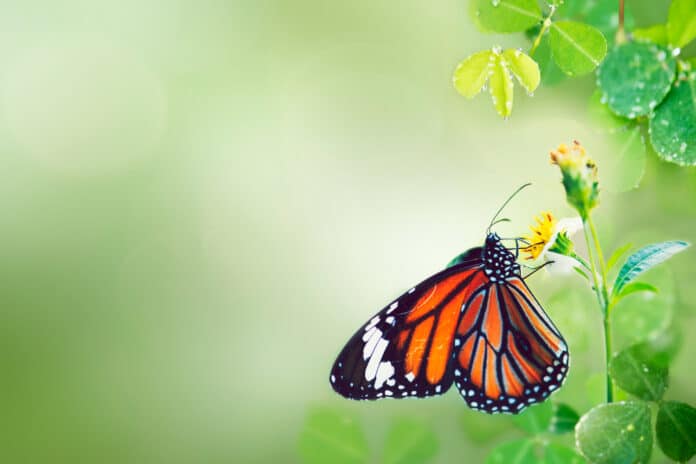Human activities in Eastern and North America may have artificially increased the monarch population by changing the habitat of Eastern and North America. The current numbers reflect an expanded precolonial population.
The new study reveals that monarch butterflies might not be as endangered as previously thought.
Senior author Joshua Puzey, an associate professor in the William & Mary biology department, said, “This doesn’t mean we shouldn’t strive to have more pollinator-friendly habitats for monarchs and beneficial insects. “
Previous studies by Boyle, Dalgleish, and Puzey shown that genetically modified crops were not the primary cause of the fall of the monarch butterfly (Danaus plexippus) and its primary food source, common milkweed (Asclepias syriaca).
In a new study, researchers broadened their focus to the past 25,000 years and sequenced DNA from milkweeds and monarchs using five different data sets. They tested several hypotheses using Approximate Bayesian Computation via Random Forests, a machine-learning method for reconstructing demographic histories.
He said, “Milkweed plants love to grow in disturbed agricultural fields.”
The researchers found that the numbers of milkweeds and monarchs increased after the last glacial period, with vast spaces becoming available to both species when glaciers retreated. Another rise was observed in the 18th and 19th centuries when deforestation and increased agricultural areas in Eastern North America created beneficial conditions for common milkweed. Milkweed abundance is at least connected with monarch growth but is not always the primary factor.
He said, “If you go out into nature during the migration to find milkweed, and you search the milkweed plants for monarch eggs or caterpillars, most of the time, you can’t find them. If milkweed plants are the limiting resource, you would expect monarchs to compete for it.”
According to researchers, monarchs were previously restricted to the Great Plains. They may have expanded their journey eastward when food supplies became accessible in the newly developed habitat.
The researcher said, “Historically, the common milkweed might have been quite rare on the landscape of Eastern North America.”
The new study found no evidence of an effective population drop in monarchs or milkweeds over the last 75 years, which correlates to increased agricultural chemical use. The reduction needed to be more recent to leave a signal in the researchers’ data collection. However, their study suggests that it simply did not happen. The decline observed over the past 40 years may reflect a mismatch between the monarch population that overwinters in Mexico and the species’ adequate population size.
He said, “What I like about the monarch is that it signals the world that insects are a vital part of our ecosystem. Their population can be fragile, and we must be concerned with the macroscopic and smallest living organisms.”
The researcher suggests more sampling and sequencing and future improvements in demographic modeling techniques to shed new light on their interpretation. The study hypothesis demonstrates that humans have a massive impact on the landscape. He offered cardinals as an example of a species that prefers the area between private yards and the woods: Humans have increased the habitat for cardinals by building additional suburbs.
He said, “Just because what we see now is normal doesn’t mean it was normal 400 years ago. What we see now is not necessarily what has always been, but we should focus on keeping things healthy and stable.”
Journal Reference:
- John H. Boyle, Susan Strickler, et al. Temporal matches between monarch butterfly and milkweed populations have changed over the past 25,000 years. Current Biology. DOI: 10.1016/j.cub.2023.07.057
